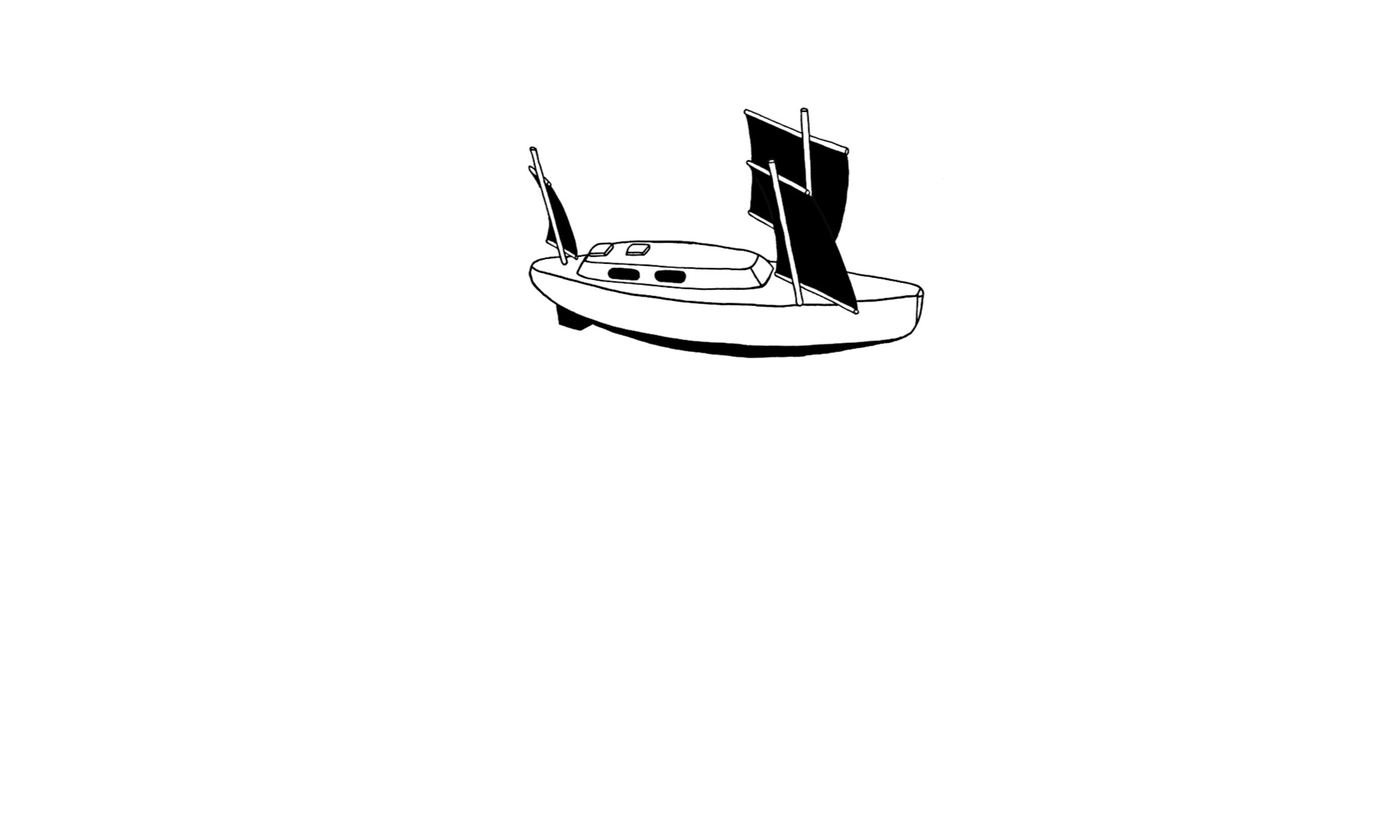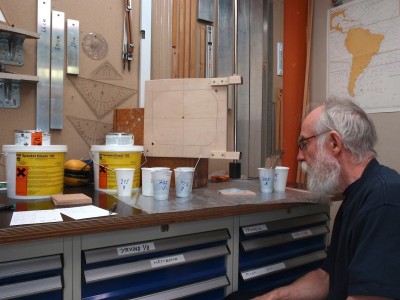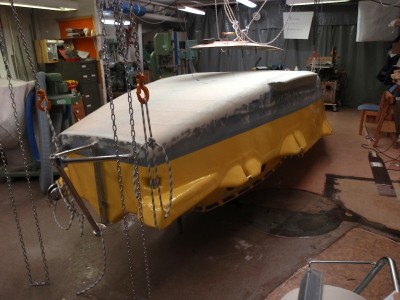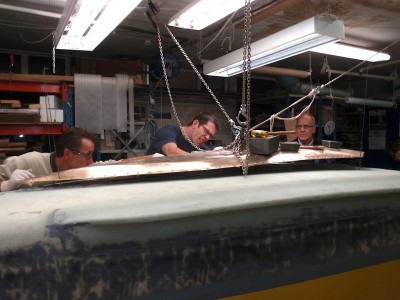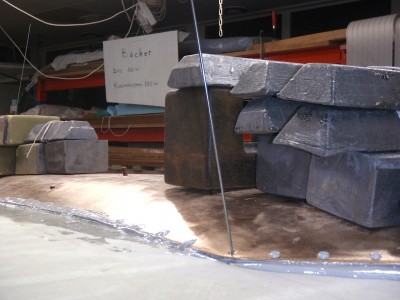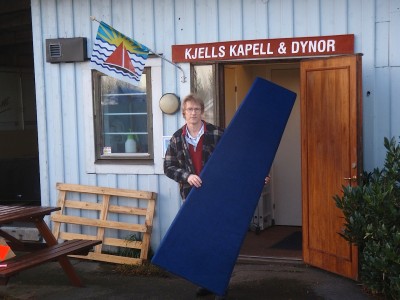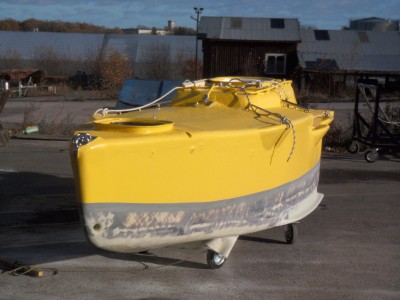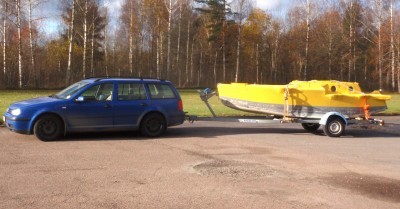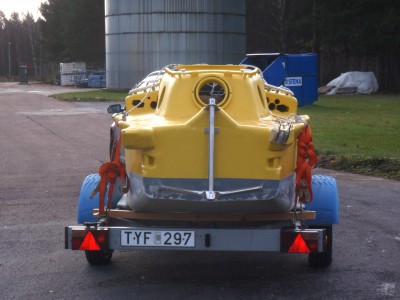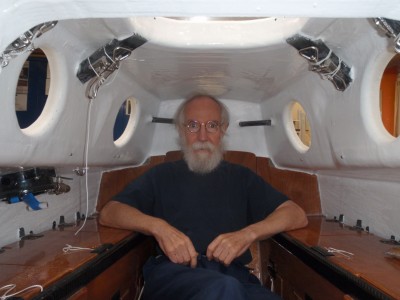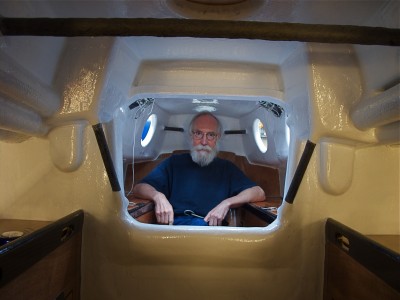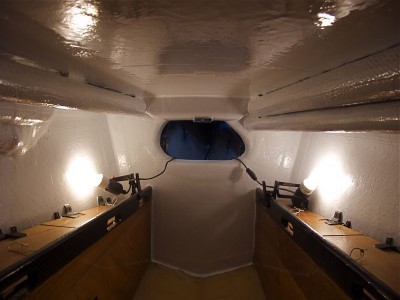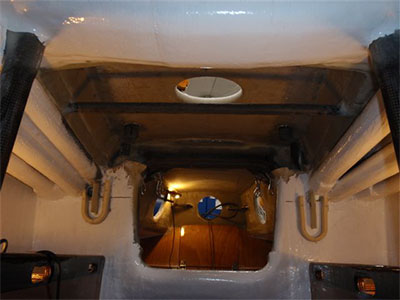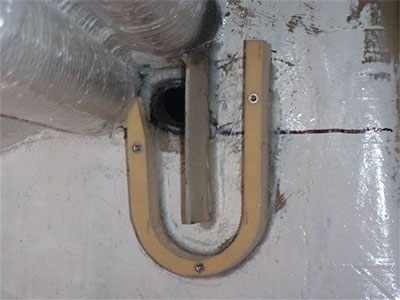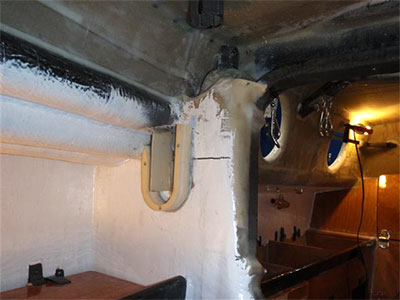A new video is published under video/photo and is about Bris minisextant
THE ALBATROSS CANNOT TEACH THE BUMBLEBEE HOW TO FLY
REFLECTIONS ON SCALE
Sailors of big boats have a low opinion of small boats’ ability to survive storms. I intend to take a small boat around Cape Horn, The Clipper Ship way, that is lat 50 south in the Atlantic to lat 50 south in the Pacific non stop. It is a big challenge and the only boat less than 60 feet to have done it single handedly was Al Hansen’s Mary Jane and that was in 1934. But then everything but a big challenge is boring and I think that it is a possibility that it can be done if the approach and mental attitude are right. I think I am the man to do it because during the fifty plus years that I have been reflecting on the laws that govern small boats behaviour at sea I have come to realise that big and small objects follow different laws and that big is not always better even if it is much, much more expensive.
For example, some small spiders have found a neat way of journeying over long stretches of water. It is useful for colonising islands and crossing straits, spreading the species.
Spiders do not have wings and cannot, technically, fly. Several types of spiders, however, can travel long distances through the air by a process called ballooning. The spiders spin long strands of silk that are caught by the wind, carrying the spiders along the air currents hundreds of miles. When they get close to their desired destination they start to eat their strands of silk, recycling it for their next trip.
Obviously this process is not possible to do on a larger scale. Not even in the strongest wind would a sailor be able to get his boat to fly by throwing long lines up in the air. Big is big and small is small and different laws apply to each and nothing will ever change that.
Scale affects even such mundane things as lifelines. On a big yacht lifelines can kill you. If you have a long line and fall overboard when the boat is travelling fast it can drag you underwater and drown you. If you have a short lifeline you can get stuck under the boat when it capsizes and drown.
On my small boat I have a long lifeline. It will not keep me underwater when the boat capsizes. If I fall in the water even when the boat is sailing fast, the sail area is so small that the boat will stop. On a small boat a lifeline is not dangerous.
Big is big and small is small and different laws apply to each and nothing will ever change that.
On October 24, 1901 on her 63rd birthday Annie Taylor, a schoolteacher, rode over Niagara Falls in a barrel four and a half feet high and three feet in diameter of her own design. It was equipped with a leather harness and straps and padded with a mattress and cushions to protect her from the impact. It was constructed of oak and iron. A 100-pound blacksmith’s anvil was used as ballast. To get sufficient air for the voyage the barrel was pressurised with a bicycle tire pump. The air made the barrel into a prestressed structure, increasing its impact strength. She was unhurt except for minor bruises.
This was 1901, much has happened since then in the field of composite construction and Annie who was a modern woman would today have used modern materials and the margin of safety would have been much higher. Today there is absolutely no problem building a small boat strong enough to survive any storm, including the worst of hurricanes, provided it is small enough. Contrary to what the establishment and especially the Recreational Craft Directive is telling you, it’s when boats are big that they are getting fragile and dangerous. Just imagine dragging a super tanker over the edge of the Niagara Falls and letting it crash 175 feet below, the result would be a heap of metal. Everyone knows that. Designers of big boats cannot teach a small boat sailor how to make his boat strong.
Big is big and small is small and different laws apply to each and nothing will ever change that.
Below are two examples of scale effects that are affecting small boats in stormy seas. The deckhouse and freeboard of my present boat are low, much lower than on my previous ones. Therefore I hope that I can live in the turbulent boundary layer that exists between air and water which gets thicker the stronger the wind is. I hope that in that layer the hull of my small boat will be hidden from the contrary winds and its resistance, but that the wing mast and the storm sails will be up in cleaner air creating a driving force. If it works then my boat will be able to point much higher than orthodox theory suggests. Will it work? I hope so.
Small and big boats also behave differently in waves. The restoring force in ocean surface waves is gravitation. The higher the gravitation is and the longer a wave is the faster the boat travels; a cruising boat can only move as fast as a wave that is as long as its waterline. To understand gravity’s part in that phenomenon one should look at the subject from an advanced standpoint.
On earth, when gravity is constant, the speed of ordinary cruising boats is 1.34 times the square root of their water line lengths. If you have a waterline of 9 feet your max speed is 4 knots, if it’s 36 feet the speed is 8 knots. The longer boat is only twice as fast although it is four times as long, diminishing returns.
(Some people consider speed as a safety feature. I do not agree. On the contrary speed is many times an excuse for not having a seaworthy boat. The same goes for emergency transmitters. When you can call for help you pay less attention to the seaworthiness of your boat.)
Should you ever happen to sail on the moon where the gravity is less you will notice that your boat is slower, on Jupiter it will be faster.
Here on earth, in heavy weather, the small boat and the ocean surface move up and down. They are subjected to acceleration and it’s impossible to detect if you are subjected to acceleration or gravity or a combination of both. That is according to Einstein.
When the surface water in which the small boat travels is upwards moving the gravitational force is stronger than when it is downwards moving. Therefore the speed of the small boat can be much higher in the trough than on the crest.
On the crest the boat is much lighter, but so is her surrounding water, because the lesser gravitational force affects water and boat the same. Therefore she does not float up, her waterline stays the same. Still being lighter she has lost stability and heels over. Some people mistakenly think that the healing over is due to more wind on the crest. That is not so. The distance between her centres of gravity and flotation is the same but her weight is less; therefore her righting moment is less. (To be more exact there may be a little more wind on the crest, but loss of stability is the main culprit. Typically half the boat’s stability is lost on the crest due to the centrifugal force. In extreme cases all stability is lost.)
At the crest, the centrifugal force diminishes the gravity. The boat’s accompanying wave therefore has less restoring force and hence, it slows down. But a cruising boat cannot sail faster than that wave. The resistance increases. The slowing down releases kinetic energy, which momentarily becomes her dominant driving force much more so than her sail power.
As the boat is sailing to windward up and down the waves, wind energy and kinetic energy are alternatively propelling the boat, much in the same way as kinetic and potential energy are alternatively driving a pendulum as it swings back and forth.
Watching a wave approach one easily gets the impression that a mountain of water is moving towards one. This is not so. Surface water is moving in a circular pattern much in the same way as wind sometimes can create waves in high grass. If nature had not figured out this neat way coasts would be flooded in storms as immense volumes of water would have been transported to the beaches with each wave.
The circulation on the crest is with the wind and in the trough against the wind.
Sailing with the wind and with the boat on the crest the circulation acts as a helping hand. This is fortunate because the boat, due to the weak gravitational field, cannot move very fast through the water. With the wind in the trough the boat is met with a contrary circulation but now there is a stronger gravitational field and the boat is again helped and can now move faster through the water.
When sailing against the wind in the trough one does not experience much of a problem because the circulation is with the boat. It is on the crest that the difficulties accumulate. There the circulation is against you. The gravity is weak and therefore the boat looses stability and heels over. The heeled boat has less driving force and more resistance. On top of that it cannot travel through the water as fast as before because the weaker gravity makes the waves go slower. Everything seems to be against you.
But do not give up because surprisingly there is no need to worry. Again nature has found a neat solution. The surface water is, as mentioned above, moving in a circular pattern. All circular movements, by law of nature, create centrifugal forces. This one is no exception. The resultant of the centrifugal force and gravity points to the centre of the earth at the crest and trough; they combine their forces in the trough and subtract them on the crest. Midway between crest and trough the centrifugal force is horizontal; being centrifugal it cover angels. Now the amazing fact is that the resultant of the centrifugal and gravitational forces is always, and I repeat, always, perpendicular to the sea surface. Gravitationally speaking uphill and downhill is an illusion. Gravitationally speaking the sea surface is flat. It takes no energy to move up a wave face nor do you gain any going down one. That is on condition that you are moving in a circular pattern with the surface water. A drifting boat, flotsam and jetsam is living proof of this. They move up and down wave surfaces without spending any energy.
A super tanker is not affected by waves shorter than itself and therefore people designing such things have no reason to reflect over what happens to smaller boats on a smaller scale. Consequently there are many things those people cannot teach small boat sailors. Not because they are stupid but because they are not familiar with and not interested in the subject.
Big is big and small is small and different laws apply to each and nothing will ever change that.
THE BRONZE SHOE
To protect the boats bottom when taking the ground as the tide goes out and when dragging her up on a beach I have fitted a bronze shoe.
Bronze was chosen because it is easy cast, has good marine corrosion resistance is antifouling as it contains 90% cupper and is quite heavy thus also acts as good ballast.
It was cast for me by BLOMSTERMÅLA METALLGJUTERI.
Fastening it to the boat presented a challenge. Many boat builders use NM flexible epoxy 705 when attaching ballast keels to sail boat hulls as it is a high quality thixotropic flexible epoxy. What is not often recognised is that to press down the thixotropic requires quite a force if the surface is large. That’s no problem when you have plenty of strong keel bolts to tighten and a small surface. On mine boat it is the opposite a large area and only three 3/8 bronze bolts to the lightning conductor.
Each square centimetre required three kilos of pressure. With an area of almost one square meter or 100 by 100 centimetres I realised that I would need about 30 tons to squeeze out the epoxy, obviously not a practical proposition. After consulting the NM epoxy chemist it was decided that I should dilute the flexible epoxy with laminating epoxy to the desired degree. That would change the rheology to make the mixture more fluid but still flexible enough.
To find out the right mixture I built a crude apparatus and made some tests.
A piston with a certain area and weight was used attached to a rod which could slide up and down constrained by simple wooden bearings. After some testing I found a mixture of 55% flexible and 45% laminating epoxy was just about right.
First I was mixing the flexible resin and its hardener, and then mixing the laminating resin and its hardener, thirdly mixing the two mixtures together.
The job had to be done quickly because once the mixing was started there was pausing. I found six volunteers and ten a clock a Saturday morning we started.
Steel rods were in place to guide the bronze into the right position.
The mixture was spread out. The boat was lifted with chain hoists to take the weight of the bronze.
About 200 kilo of lead and cast iron weight was added to the 126 kilos of the bronze. The three bolts to the lightning conductor were tightened. The epoxy mixture flowed out nicely. The heat in the room was turned up to the maximum. The operation was successful. I thanked my volunteers they had done a good job, they were all needed. I slept well.
MATTRESS
MY BOAT IS NOW PAINTED YELLOW
Yrvind at Hamel Sails
A boat designed by Yrvind is extreme in all ways. First it´s very small and it should handle extremely rough conditions. It should be safe and provide protection for its crew. It should carry heavy load and should be able to sail in any weather conditions.
On top of that it should survive a rollover. A challenge for Yrvind was to find a sailmaker who understood his requirements and that is also a good interlocutor.
In this film Yrvind meets the guys at Hamel Sails. The film also shows how a sail is made. If you have a fast internet connection, you can view the movie in full screen HD, 720p.
Film clips
Under photo/video you find photos and video clips showing older boats designed by Yrvind.
Sven demonstrating his new boat
By Beppe Backlund, Webmaster
Last weekend I visit Sven to se how his boat project advanced. I had my little camera with me and in this film you can se the results, Sven demonstrated how some parts of the boat is working.
See more video clips showing boats owned by Yrvind under video/photo
THE RIG
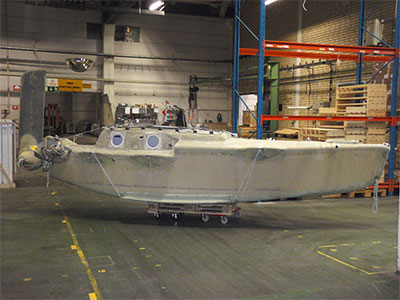
click on the pictures to make them bigger
To get an idea how the rig will set up and to figure out the sheet leads, I asked and got permission of my kind neighbour Logpart, to move the boat into their place.
I attached eight small wheels to a pellet and put the boat on the pellet. She moved along nicely. It was the first time I saw the boat from a distance longer than about three meters. I liked what I saw. She will be a good boat.

I put up the mast. At first there was some confusion with all the ropes but I soon got the grips on it.
The rig is special in that it is stayed but got no standing rigging. It is a bit like a windsurfer mast. It can move around and it has al those advantages. Instead of holding the mast with my hands I use running rigging. The mast has a wing section and is rotating. In addition to that if I lean the mast to windward the boat will get a lee helm if I lean the mast to the lee the boat gets weather helm.
As all the shrouds are movable there will be no chafe sailing downwind. The lee shroud can be slacked after setting up a backstay and the boom can be let out 120 degrees making it more course stable and less likely to gybe. Instead of a spinnaker pole fitting there as an extra gooseneck and its toggle can easily be removed to save windage on a beat. I have a long and a short boom, a long and a short wisker pole for different wind strengths and the can easily be changed without leaving the cockpit.
My sponsor Göran Marström the Olympic Tornado Medallist, came and had a look. He did not object even if it was not his way of doing things. My boat is way to slow for him.
To be continued?

click on the pictures to make them bigger
To get an idea how the rig will set up and to figure out the sheet leads, I asked and got permission of my kind neighbour Logpart, to move the boat into their place.I attached eight small wheels to a pellet and put the boat on the pellet. She moved along nicely. It was the first time I saw the boat from a distance longer than about three meters. I liked what I saw. She will be a good boat.

I put up the mast. At first there was some confusion with all the ropes but I soon got the grips on it.The rig is special in that it is stayed but got no standing rigging. It is a bit like a windsurfer mast. It can move around and it has al those advantages. Instead of holding the mast with my hands I use running rigging. The mast has a wing section and is rotating. In addition to that if I lean the mast to windward the boat will get a lee helm if I lean the mast to the lee the boat gets weather helm.As all the shrouds are movable there will be no chafe sailing downwind. The lee shroud can be slacked after setting up a backstay and the boom can be let out 120 degrees making it more course stable and less likely to gybe. Instead of a spinnaker pole fitting there as an extra gooseneck and its toggle can easily be removed to save windage on a beat. I have a long and a short boom, a long and a short wisker pole for different wind strengths and the can easily be changed without leaving the cockpit.My sponsor Göran Marström the Olympic Tornado Medallist, came and had a look. He did not object even if it was not his way of doing things. My boat is way to slow for him.To be continued?
THE DORADE BOX
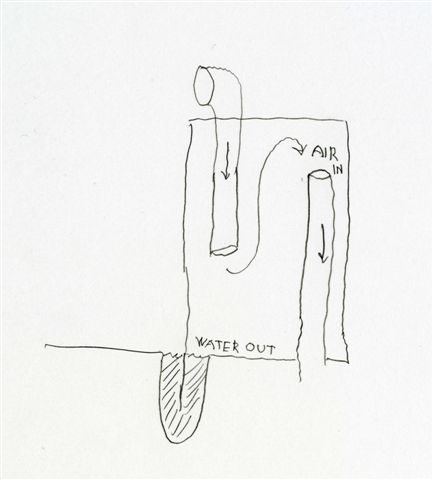
click on the pictures to make them bigger
In strong winds the dorade box is the first line of defense against water trying to enter the ventilation systen.
It should have a big volume be deep have a small inlet and a big drain. To prevent the incoming air going out the drain instead of coming into the living area I use a U-tube, familiar from the common verity of WC where it prevents bad smells from entering the house.
The picture of the finished doradebox shows that the boat is now also painted on the inside. The black handhold from the corner of the box also functions to prevent my delicate head from hitting the corner.
In Archive July 2008 I describe how the rest of my heavy weather ventilation system prevents water from entering the boat even if its upside down.
